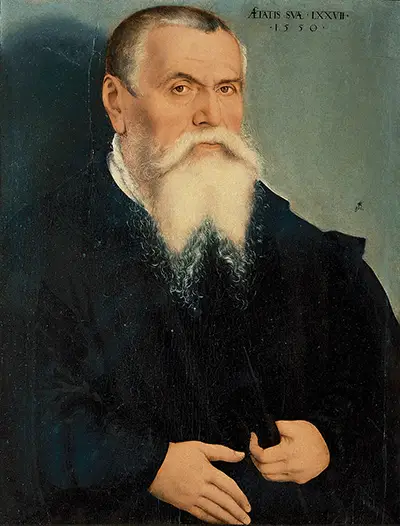Lucas Cranach the Elder was a multi-talented artist who played a significant role in the Northern Renaissance during the early 16th century. He remains one of the most famous artists in German history.
This was an artist who became a major part of his local community, going far beyond just these creative boundaries. He would use his respected reputation to become a politician and was also in charge of a large workshop which provided employment and training to a number of other local artists. It was also an avenue for further development in his own career, with prominent figures from across the rest of Germany coming to visit this studio from time to time. Cranach was always looking to try out new techniques, with his final oeuvre boasting both considerable quantity and quality. His own workshop left behind over 1,000 paintings, with around one fifth of those being positively identified as having come from this master's own hand.
When you consider that nearly five centuries have past since this workshop was in full flow, one can only assume that many more artworks were produced during that period, but would not have survived up to the present day. Thankfully, what still exists is now highly valuable and consequently preserved particularly effectively. Even beyond the likes of Cranach and Durer, those related but lesser known still produced paintings that today also hold significant value, through their association to these great names as well as the high level of technical brilliance that persisted throughout the workshop and across the German nation. The names discussed here would also become a part of the wider Northern Renaissance which also took in famous names from the Netherlands, including the likes of Jan van Eyck, Hieronymus Bosch, Jean Fouquet and Robert Campin.
Cranach produced many portraits during his time as a court painter but he also took on religious and mythical themes too. Due to the nature of his employment many notable figures appear in his portrait oeuvre, including several princes and leading religious figures. Art history is littered with famous painters who served as court painters as a means to supporting themselves financially, with Diego Velazquez being one of the most famous in 17th century Spain. You may also remember that Rembrandt attempted to manage his large debts by producing large numbers of portraits, though that was in a less rigid structure. Velazquez and also Dutch artist, Jan van Eyck, would actually be used in other functions related to the court too, reflecting their intelligence and respected adaptability.
This period in European art arrived before landscape painting was treated as an equal of existing artistic genres but he was highly skilled in depicting scenes within the background of his compositions. You find similar in the work of Italian painter Giorgione and many will not even notice these additions before taking a closer look, as the main focus will be on figurative portraits in the foreground. Judgement of Paris is one of the best examples of Cranach's abilities within landscape painting. The likes of Caspar David Friedrich would help to establish landscape painting as a major genre of its own several centuries later as German artists would play a significant role within that - it was the Romanticist movement which really brought this genre into the mainstream after this was to become a truly pan-European movement, also featuring the likes of Delacroix and Turner as part of a new direction towards a more expressive style of depicting form on canvas and allowing artists to really push new boundaries from the depths of their soul rather than simply aiming to reproduce what they can see or read. woodcuts engravings.
Cranach's Paintings
Cranach's Engravings and Woodcuts
Cranach and the Northern Renaissance
The Cranach family would produce notable artists across several generations and this was matched by several other families from within the Northern Renaissance and other related movements. Most famously would be the Bruegels and the Holbeins. Inspiration could also be found from within the family in other ways too, such as with Albrecht Durer who studied his father's collection of botany books from a young age in order to understand and practice his knowledge of drawing, specifically of natural topics. He would then go on to become one of the most famous draughtsman in history and also was involved heavily in woodcuts and engravings, just as with the Cranachs. With regards Lucas the Elder, he worked within a large studio where ideas and techniques were freely passed around and his own son would take advantage of his achievements by reproducing copies of some of his more famous artworks after his passing, just as Bruegel the Younger would also do.
Peter Paul Rubens Anthony Van Dyck Vermeer Albrecht Altdorfer Rogier van der Weyden Hans Memling



